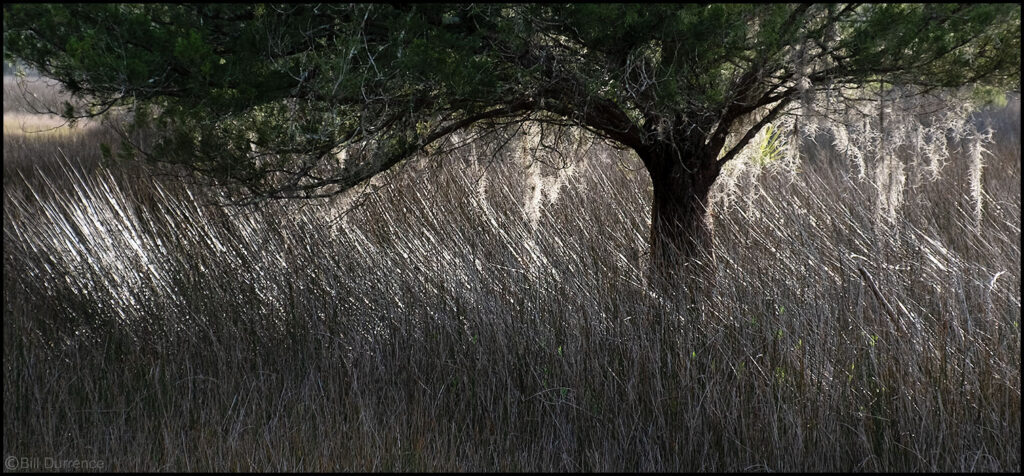Savannah, 2024

A photograph is first and foremost (almost) always about the light. By definition. It’s in the etymology, from the Greek words “phos” (light) and “graphê” (writing or drawing), to mean “drawing with light.” The only exception I can think of is if the content is so important or essential (breaking news of a disaster for instance) that it easily outweighs other deficiencies.
I was helping a friend do a small group photo trip in Savannah earlier this year, trying to show more of the city’s variety than just the old city where the tourism industry focuses. We went to Skidaway Island State Park to see something of the barrier island/estuary/marsh ecosystem, but heavy rains had closed trails and we could not get far into the wildness. Standing there deciding how to proceed, this patch of light and silhouetted tree spoke to me, yelled at me might be more accurate.
One lesson from my early photojournalism career was that there is always at least one usable, publishable picture, and it’s my job to find it. One does not tell an editor there’s no photo because you weren’t “feeling it.” Not more than once, anyway.
“Drawing with light” was an inevitable idea. For centuries artists had been using the camera obscura and camera lucida as drawing tools. Years ago, a friend on a Fullbright Scholarship was doing research in the Vatican Library and came across a reference to the camera obscura in 16th century Arabic literature. She also was frustrated doing research there because she had to go through a thorough security protocol to get in in the morning (this was in the 70’s), then was required to leave during a long lunch break (it is Italy), and then had to repeat the security gauntlet again for the afternoon.
A variation on the camera obscura might be a modified carriage one could drive into the countryside with a darkened interior and a small aperture on one side. The pastoral scene outside the opening would be projected onto the opposite interior wall and he or she could sit in the dark and trace the outlines. Or in a shoebox-sized container, an aperture would direct an exterior view into a dark chamber where a mirror positioned at an angle redirected the light up to a glass surface where the likeness could be traced, drawn, or painted. The camera lucida is the granddaddy of what we today call an SLR (Single Lens Reflex) camera.
Much of human endeavor is an effort to make tasks simpler, easier, and it’s a natural evolution in creating pictures to start asking, “How about some paper that will react to the light and draw itself, once I have the image projected?” Or something like that. And so, after 185 years and much science, along with some imaginative thinking, we can make high resolution photos with our phone, edit them, archive them in a cloud database, send them almost anywhere in the world instantly, actually make video phone calls in real time (Dick Tracy stuff of my childhood), and access most of the information in the Vatican Digital Library, all with one device smaller than our hand.
For more of Bill’s photographs, go to https://www.billdurrence.com/index

Mickey Youmans
This is an amazing read. Great way to start the day.